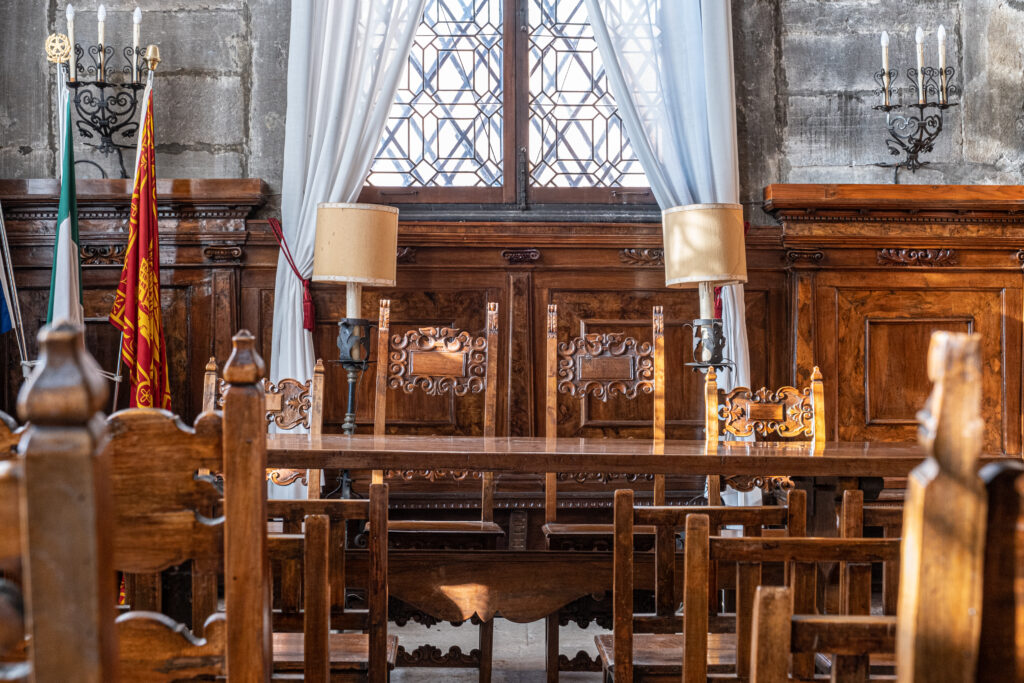The Court
There was more than one room equipped for trials, the one we can visit in this tour is the only one to remain intact. Here is where the jury, the public prosecutor, the defense lawyer and the scribe, in charge of writing and record the proceedings, used to gather for the trial`discussion. The only one who did not have the right to follow his own trial was the defendant who had to wait outside until the final verdict was reached.
In this prison, however, it was immediately decided to make availablea office` lawyer for those who could not afford it, and like today, the lawyer had to follow the client until the end of the sentence in the event that, found guilty , was imprisoned.
The judicial history of the building is almost completely preserved and therefore the documents of almost all the trials are available allowing us to have an idea not only on the conduct of the trials but also on the type of sentences and punishments decided at the conclusion. Some were quite similar to those of today such as the payment of fines, house arrest and prison, others instead typical of the time such as mutilation, torture and death penalty, which in Venice was carried out with different criteria, i.e. hanging, beheading, public fires, quartering with horses, suffocation in the sea and strangulation in secret.
Some were carried out in public, between the two columns of the Piazzetta San Marco near the shore such as hanging, beheading, public burning and quartering; the hanged were exposed for a few days between the two pink columns that can be seen on the first floor of the the Doge’s Palace on the side near the Basilica of San Marco.
The most serious death penalty was that of strangulation in secret, in which case the family could not request the body of the relative whose name, if Venetian, was canceled from the municipal registers. This was in fact carried out in the case of the crime considered more serious for the justice of the Republic , that is the plot against the State (considered more serious than the same murder), a crime for which a Venetian criminal who had betrayed his city was deemed unworthy. to be remembered from the dead as a citizen of the Republic.
In this case also the process underwent a particular practice. The Council of Ten was called to work as a jury, composed as the name suggests, of ten high-level aristocrats chosen by the Maggior Consiglio (the Venetian Senate), to be part of a body created following the conspiracies of the fourteenth century and which continued. to exist until the fall of the Republic in 1797.
The work of the Ten was almost intelligence, that is to discover, stop and intercept any plot that could undermine the security and stability of the State, which is why they were equipped with a very efficient group of spies , they remained in office for only one year to avoid any abuse of office, they had their own fund of which they did not have to report, and the head was the Doge, which is why if the reason for the trial was a conspiracy in the court, the Council came to preside with the Doge himself at the head of the procedure.
